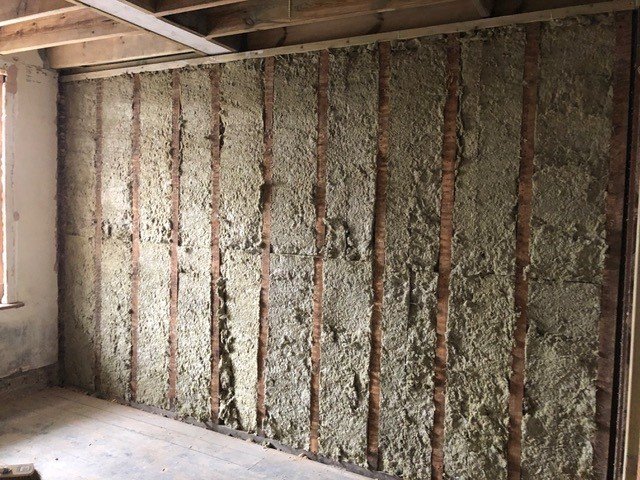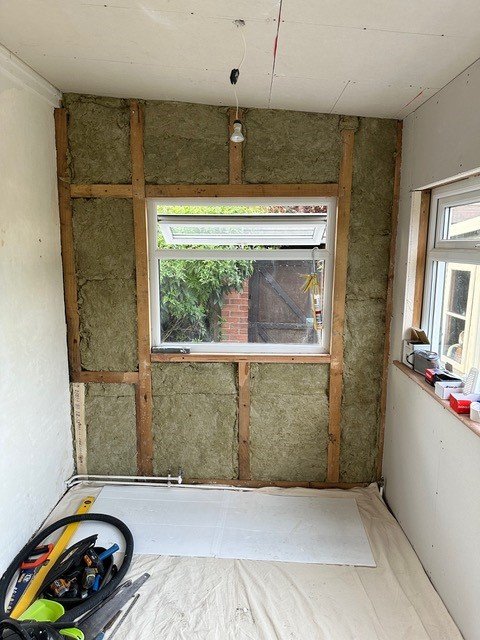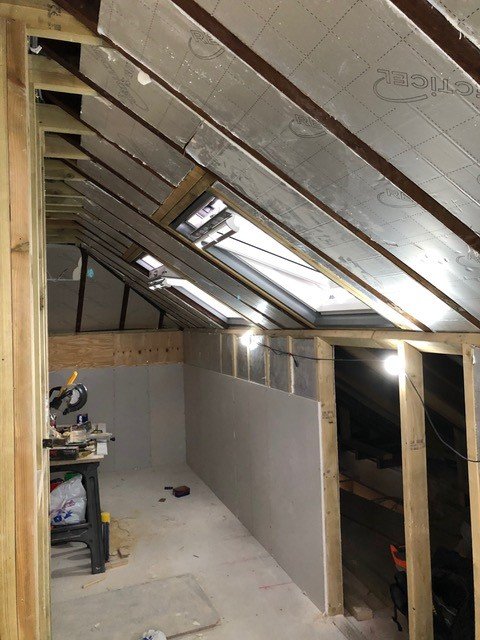Internal Wall Insulation
Internal wall insulation is a home improvement method that involves adding a layer of insulation material to the interior walls of a building, establishing a thermal barrier. This process enhances the regulation of indoor temperatures, preventing heat loss in the winter and heat gain in the summer. The insulation is commonly covered with a protective finish, contributing to the aesthetics of the building while providing resistance to weather conditions. Internal wall insulation proves to be a effective solution for boosting energy efficiency, cutting down on heating and cooling expenses, and improving the overall comfort within a property. It is often chosen for its practical advantages and its positive impact on the visual appeal of living spaces.
Why choose Internal Wall Insulation?
- Reduction in energy bills
- Stable and regulated indoor temperature
- Enhanced decoration finish to the internal walls
Are grants available for Internal Wall Insulation?
Yes, there are grants available. Should your walls be uninsulated then they are required to be insulated under Eco4 in order to qualify for a grant. Please note, in order to qualify for a grant, ventilation may need to be upgraded as part of your package of works.
FAQs
How long does it take to install internal wall insulation?
The duration for installing internal wall insulation can vary depending on several factors, including the size of the area to be insulated, the complexity of the installation process, and the specific materials and techniques used. On average, the installation of internal wall insulation for a standard-sized room might take anywhere from a few days to a week.
Here are some factors that can influence the installation timeline:
1. Preparation: Preparing the walls for insulation, which may involve cleaning, repairing any existing damage, or addressing issues like dampness, can add to the overall time.
2. Type of Insulation: The type of insulation material chosen can affect the installation time. For example, installing rigid foam boards may be quicker than installing insulation that requires multiple layers.
3. Access and Obstacles: The ease of access to the walls and the presence of obstacles, such as furniture or fixtures, can impact the installation time.
4. Installation Method: Different methods of installation, such as dry lining or stud wall insulation, can have varying time requirements.
Certifications
MCS defines, maintains and improves quality by certifying low-carbon energy technologies and contractors – including heat pumps, solar, biomass, wind and battery storage. MCS aims to decarbonise heat and power in the UK’s homes by giving you confidence in home-grown energy.
EPVS is a certification standard that validates the processes used by installers to ensure energy-saving, generating and/or storing calculations/estimates for home energy products are accurate and valid.
TrustMark delivers consumer confidence through its expert network of Scheme Providers and their Registered Businesses. TrustMark Scheme Providers commit to meeting the Framework Operating Requirements and ensuring their Registered Businesses maintain required standards of technical competence, customer service and trading practices.
HIES is a leading consumer protection organisation covering the installation of home energy products. Our promise is to ensure all consumers are respected, protected and educated on their home improvement journey.
GivEnergy are a British Owned Battery Storage Manufacturer with manufacturing/Research and Development facilities in the UK, Ireland, Australia and Shenzhen China (Shenzhen Givenergy Technology Co., Ltd)
The Flexible Energy Oversight Registration Body (Flexi-Orb) helps deliver the safe and controlled sale, deployment, decommissioning and recycling of energy saving, generating and storing products (such as solar PV, boilers, energy storage, heat pumps, electric vehicle energy storage, EV charging points etc).










